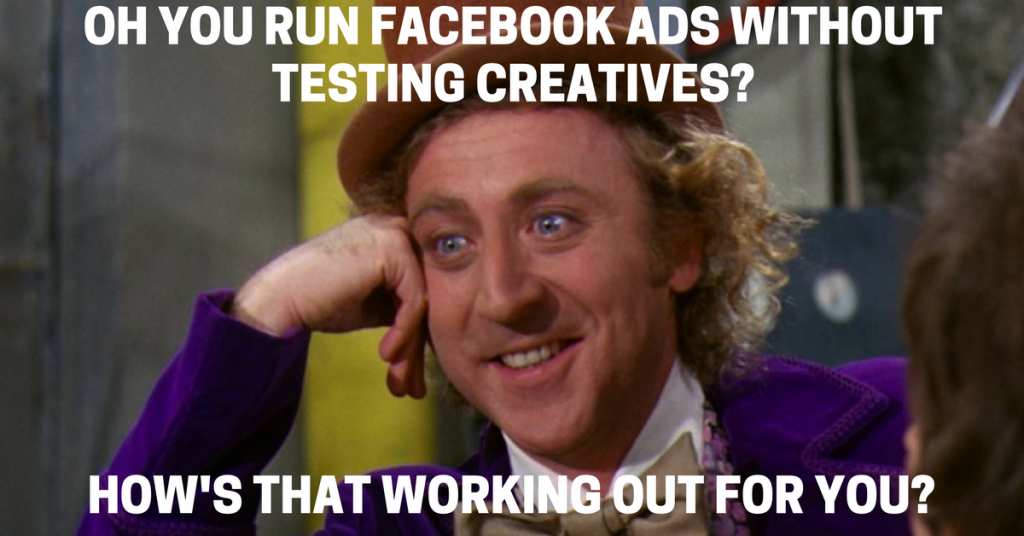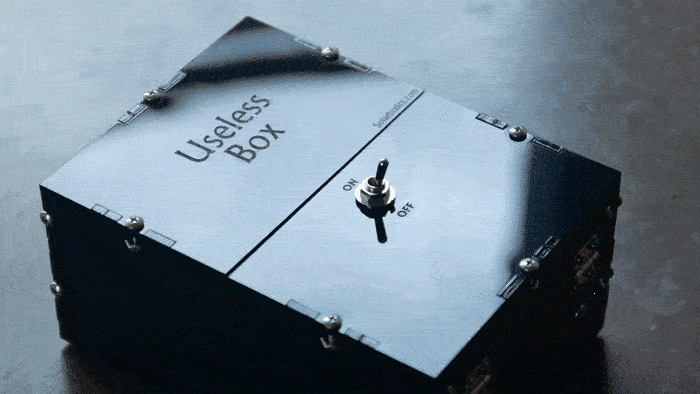
Always be testing.
It’s the number one rule of Paid advertising.
And it’s the most important process for achieving success with Facebook ads.
The sad reality is that even your most successful Facebook ads will start to die out quickly once you’ve scaled them out with a decent budget.
The best way to continue your success is to come up with a new ad creative or to promote your winning ads to a new audience.
“There’s no long term success on Facebook Ads without testing lots of creatives.”
That’s why we need to always be testing new ad creatives.
Here’s the process we use to test and scale Facebook ads at Zammo Digital…
- First, the guidelines
- Only test one element at a time
- Test elements that have the biggest impact on results first
- For elements that aren’t being tested, use your top performing variables
- Determine metrics for evaluating tests at the beginning. And stick to them.
- Kill losers quickly. Increase budgets on winner quickly.
Now, let’s try to understand these guidelines with a bit more detail.
Only test one element at a time
If you’re testing images, then don’t use different headlines.
If you’re testing headlines, then don’t use different images.
When we start testing a new batch of ads, we make sure that each creative is in its own ad set (i.e. one ad per ad set). And each ad set is targeting the same audience and using the same optimization settings.
The testing ad sets should all be exactly the same except for the ad creative that they are each testing.
The reason you need to put each ad into its own ad set is to make sure that Facebook allocates a sufficient budget and number of impressions to each ad. Often, when you put multiple ad in a single ad set, Facebook will pick a winner too quickly and will start to deliver nearly all the budget to that ad. Then you’re left with other ads in the ad set that didn’t get enough impressions to get statistical confidence about their results.
Getting started
When starting off a new campaign, we like to test copy first.
Testing copy and images are usually the most important elements of determining the success of an ad. That’s why we focus most testing efforts on these elements.
(I’m assuming of course, that you are promoting a good offer that people want)
Don’t start with testing less important elements.

Usually, we begin with one image that we think we will be decent (we’re not testing images yet, so we don’t know what will work best).
Then, we come up with 10 different text versions that we want to test. All the text version will be tested with the same image. When starting to test copy make sure that the different version are dramatically different.
Each ad being tested will be in its own ad set. Each ad set is identical.
For elements that aren’t being tested, use your top performing variables.
The parameters of the ad sets you test with should be set to your best performing variables. So, for example, test using your best performing audience. This way, you know that if an ad fails it is because the ad creative was a dud, not the audience. Kapeesh?

IMPORTANT: As you’ll see with most of my recommendations, our goal is to always be as scientific as possible in our testing. That means that we try to keep as many variables the same as possible so that we are confident that any difference in outcome is due to the variable that we are testing.
Picking the winner
After we let each new ad to get at least a few thousand impressions, it’s time to select the winning copy.
(The amount of budget you’ll need to use for your test will vary. We’ll get into that a bit below in the section of this article about metrics.)
One more thing… Once you set your new test ad live, don’t touch them for at least 24-48 hours. Let them run and do their thing.
Then come back in another day or two to evaluate the data.
Once we’ve selected our best performing copy, we will test that copy again with at least 10 new images.
Then we pick our best ads (based on data).
Through this process, we’ve tested 10 text variations and 10 images. Hopefully, at this point, you’ll have at least one winner.

You can continue testing and optimizing from this point using the same methodical process.
Other Facebook ad elements to consider testing are:
- Website Conversion Optimization vs Engagement vs link clicks
- Attribution windows (1-day vs 7-day)
- Auto vs Manual bid
- Placements (Mobile, Desktop, Instagram, Right column, etc). Make sure creatives are optimized for each placement.
- Test using emojis in your ad copy.
Testing Audiences
You can also test different audiences using the principles outlined here.
When testing audiences, be sure that you are using the same ad creative for each audience. This way, you know you can attribute differences in results to the different audiences.
KPIs, Metrics and Data for Picking Winners
When testing your Facebook ads, it’s important that we evaluate success or failure using data. Not emotions.
I know you put a lot of time, creativity and passion into creating great ads. But don’t get emotionally attached to your ads.
When people get emotionally connected, they usually let losing ads run much longer than they should.
That’s why I want you to make decisions based on data.
So what data should you be looking at?
Great question!
I’m glad you asked.
Ideally, you only want to judge ads based on your primary campaign objective.
So, if you’re trying to generate Conversions, then Cost per Conversion (or Return On Ad Spend, ROAS) should be your primary KPI. Ads that don’t achieve profitable conversions, should be turned off quickly. Profitable ads should be expanded.
If you’re trying to get post engagements, then judge ads based on cost per engagement.
You get the idea.
But make sure that you give each test enough budget and impressions to be statistically relevant before you kill them too fast.
What budget should you use for testing Facebook Ads?
In general, I recommend allocating about 10% – 15% of your budget to testing. The rest of your budget should be allocated to scaling your profitable campaigns.
The question of how much to spend on each individual test is a little trickier.
In order to determine if a new test is profitable, you’ll need to spend at least two times the value of your target cost per conversion. So if your goal is $50 conversions, then you’ll probably want to spend at least $100
However, it’s often easier to quickly identify your losers than your winners so you can shut them off quickly.
The challenge is when your target cost per conversion is relatively high and you don’t want to spend that much on each new ad being test.
In that case, you can sometimes identify poor performers quickly using other metrics.
For example, if you know that all your past successful ads achieved a CTR of 1% or better or if your CPC was below $1, then you can turn off ads that don’t achieve those metrics. Just make sure that you give the ads enough volume of impressions to reach a statistically relevant conclusion on CTR or CPC.
What about other metrics?
In general, it’s important that Facebook ads are only judged based on their primary conversion objective. In most cases, that’s going to be cost per conversion.
I’ve had clients complain that their Cost Per Click was too high or that the ads weren’t getting enough engagement.
But then I point out that the Cost Per Conversion was profitable for them regardless of the other metrics.
Clients are usually quiet (and happy) after that point ????
That being said… We still pay a lot of attention to metrics like CTR, CPC, CPM, etc. We don’t judge success based on these metrics, but we can often judge the general health of a campaign based on these metrics.
Ready to scale up?
OK, so after following our testing methods, you’ve probably found some winning ads that are hitting your CPA targets.
Rock on!
Let’s start scaling those winners up for more volume.
But first a heads up… scaling is a very delicate process on Facebook. If you get too aggressive too quickly, then you can see results crash like a house of cards.

There are 3 general methods for increasing scale of your winning ads:
1. Increase budget for your profitable ad sets
When increasing budget, be sure not to increase too quickly. As a general guideline, you should bump up the budget about 20% every 24-48 hours. Don’t adjust budgets more frequently than that because every time you adjust the budget, the algorithm needs to readjust itself.
This advice comes directly from Facebook:
It takes our ad delivery system 24 hours to adjust the performance level for your ad. It can take longer when you edit your ad frequently. To fix it, let your ad run for at least 24 hours before you edit it again.
2. Duplicate ad sets and change to different objectives
If you’re having success with your ad optimizing for conversions, then consider a small test optimizing for engagements or website traffic to the same audience. Facebook will deliver impressions to different people based on different objectives. So sometimes, you can reach more people and get more conversions by changing the objective.
You can use this same principle to optimize for a different conversion event higher or lower in the conversion funnel (for example, adds to cart rather than purchases).
3. Duplicate ads to additional audiences
If you find an ad that’s doing really well, you’ll want as many relevant people to see it as possible. So if it’s doing well for Lookalike audiences, then duplicate the ad to different audiences such as other Lookalikes, Interest groups, retargeting, fans, etc.
Now, it’s your turn to fly!
Take this process, test it, adjust it and make it your own.
Once you learn to effectively test and scale ads, then you’ll be unstoppable on Facebook.
Anything to add? Any questions?
Hit me up in the comments…

This is a perfect testing methodology. But often i’d tight budgets by which i could able to afford to test 2-3 ad sets which would be consume 10% of total budget. I those cases can you suggest some standard metrics to help?
Great post! On which platform do you prefer to do your testing (Adespresso, ad manager, etc…)?
Hey Jason! Great to see you here 🙂
I make all my ads in Power Editor. And I generally review everything in Ads Manager.
Ad Espresso is a great tool but I don’t currently use it.
This is an excellent article Aaron, I am going to share it on my Facebook page, LinkedIn page and twitter page. Well done. Scaling and developing profitable pipelines are ridiculously important to any ads manager.
Thanks Peter!
Great article, Aaron! What audience size would you recommend to start off with?
Thanks for the great article! Though one questions remains open: What would you do if you only have a short time frame for your ads, if your offer expires in only a week?
Scaling just 20 % per day might not do the job when we want to aggressively advertise the offer. We’re running the ad on a very broad audience with 30M+ users so can’t really duplicate it to another audience as this audience contains all possible customers.
Great question Moritz! If you absolutely need to scale quickly. Then your best bet is probably going to be a) continue scaling up your winning ad sets day by day, but also b) duplicate those winning ad sets and give them bigger budgets.
Another approach can be to set your budget at the campaign level (rather than at the Ad set level). The reason is that when you make a large budget change at the campaign level it doesn’t reset the learning at the ad set level. But changing ad set budget can reset learning stage.
Hope this helps.
Aaron
wouldn’t targeting multiple ad sets at the same audiences create competition among them and increase costs? isn’t that audience overlap?
Yes, it is audience overlap. But to be honest we don’t worry about that too much.
Why is the audience overlap not something you worry about? I’m trying to follow best practice and I thought this was a significant factor to avoid….
hi Aaron! Would be great if you could answer Karen’s question. How come you don’t worry about audience overlap?
Hi Aaron, it’s a great article, many thanks for it 🙂
I have the same dilemma like Karen has. Could you share us more details about why we shouldn’t worry about audience overlap, please?
Many thanks.
Greg
What is “enough” , what is the winning numbers?
What is a good engagement, what number is considered good? what numbers can be taken as winning numbers?
Hi Aaron,
Great article, thank you! Do you agree for adding budget, it would be best to duplicate the best performing Ad set and them increase the budget to 10%?
Or keep the same Ad set and then just increase the budget to 10%?
Thanks,
Janice
Generally, we would prefer to simply increase the budget in the original ad set. You can safely increase the budget by at least 20% per day without resetting the learning phase of the ad set.
Phew! I am overwhelmed with the information provided. It looks good. I am generally promoting affiliate programs, focusing first on getting opt-ins, where, I then attempt to get affiliate comissions by selling through email and facebook messenger marketing for free for ever to my subscribers. Let’s see how many opt-ins, I will get using the methods provided here. Wish me luck!
Thanks a ton. It’s a very informative post. What about Instagram ads?
You say
“I’ve had clients complain that their Cost Per Click was too high or that the ads weren’t getting enough engagement.
But then I point out that the Cost Per Conversion was profitable for them regardless of the other metrics.
Clients are usually quiet (and happy) after that point ????””
So what do you say for the other 99.9% of facebook ad consumers that have a negative ad conversion
It boggles my mind why people don’t put a date on their “valuable” articles talking all about extremely changeable information. So, I can’t trust this article.
Pingback: 4 Essential Facebook Campaigns For Your B2B SaaS Company
Pingback: 3 Free Tools to Spy on Your Competitor’s Paid Social Ads (Facebook, LinkedIn &Twitter)
Thanks for the article! I have a question with daily/lifetime budgets with your methodology. Do you always use daily or lifetime? Do you use a mix?
We generally only use daily budgets